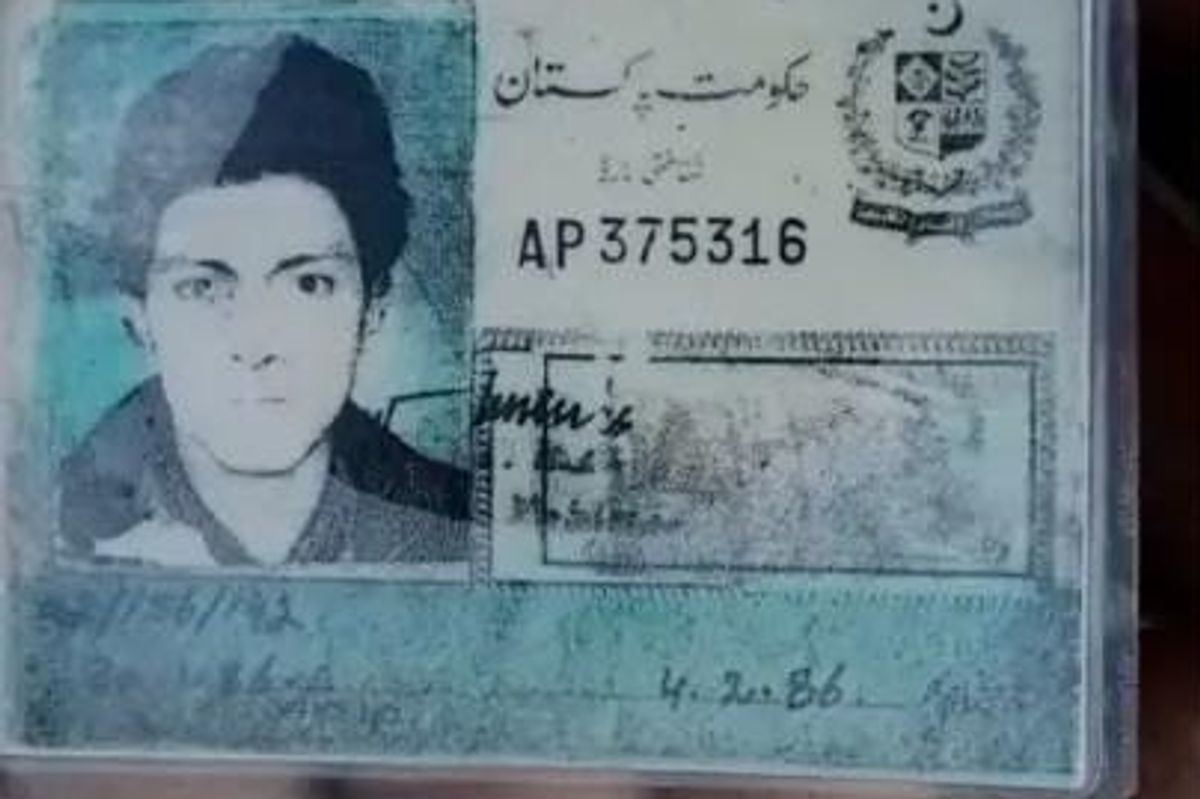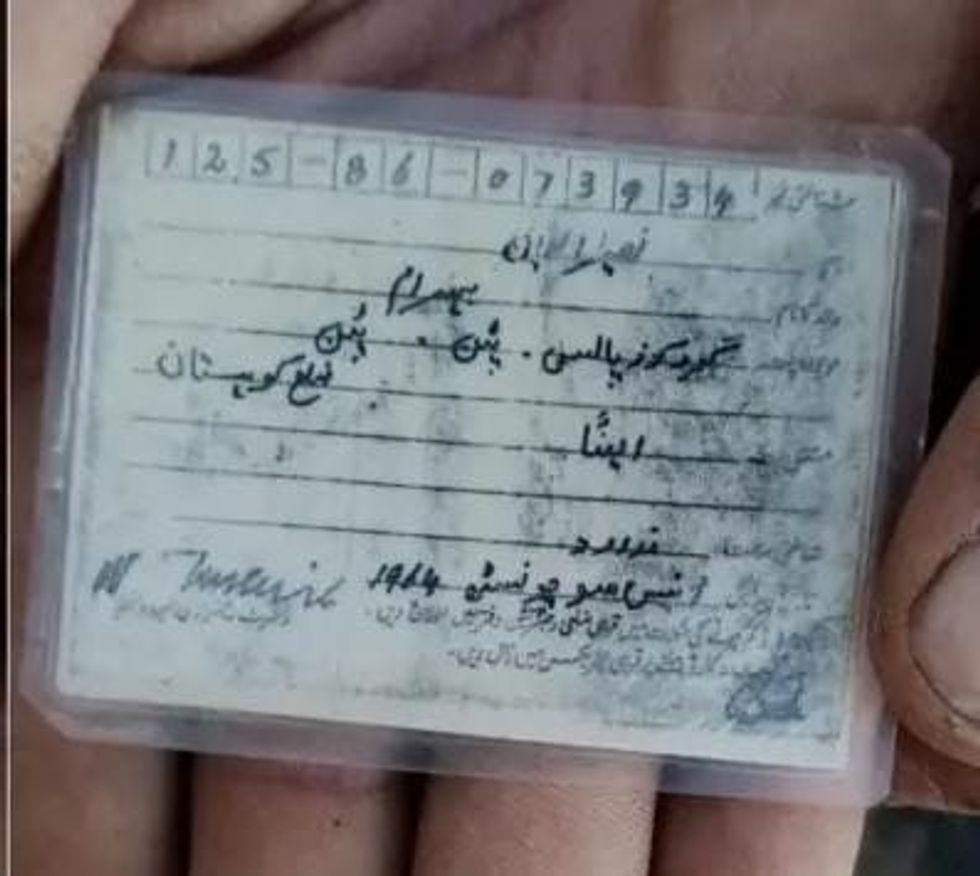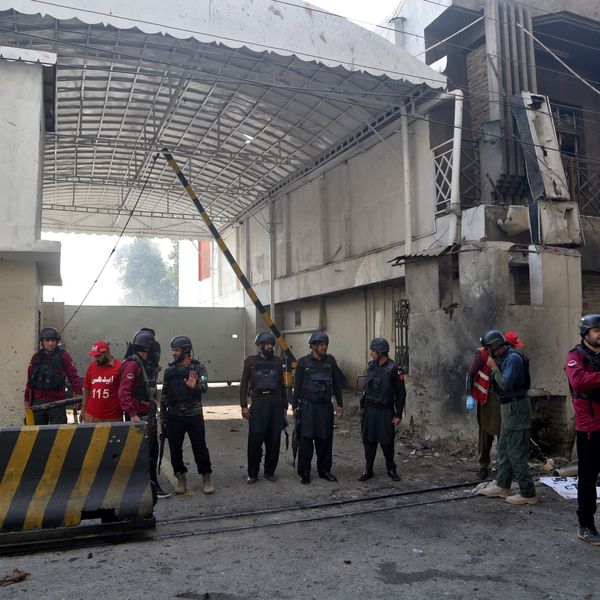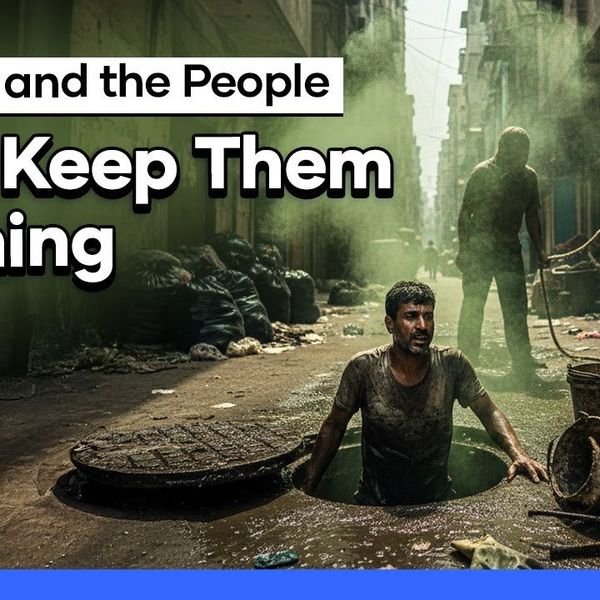Body of man missing for 28 years found preserved in Pakistan’s melting glacier
Hikers discovered the astonishingly well-preserved body of Naseeruddin in Khyber Pakhtunkhwa’s Lady Valley
Kamran Ali
Correspondent Nukta
Kamran Ali, a seasoned journalist from Khyber Pakhtunkhwa, Pakistan, has a decade of experience covering terrorism, human rights, politics, economy, climate change, culture, and sports. With an MS in Media Studies, he has worked across print, radio, TV, and digital media, producing investigative reports and co-hosting shows that highlight critical issues.

District Police Officer Amjad Hussain told Nukta that the body was identified through a national identity card recovered at the site.
Courtesy: Kohistan Police
The body of a man who went missing nearly three decades ago has been discovered astonishingly preserved inside a melting glacier in northern Pakistan.
The remains were found by a group of hikers in the Lady Valley, a remote region in the Kolai-Palas Kohistan district of Khyber Pakhtunkhwa province, authorities said.
District Police Officer Amjad Hussain told Nukta that the body was identified through a national identity card recovered at the site. The ID bore the name Naseeruddin, a man who went missing in 1997 and was believed to have fallen into the glacier.
According to his brother, Naseeruddin was 33 when he disappeared after reportedly fleeing his home due to a longstanding tribal feud. He left behind a widow and two children.
However, police say no missing person report was ever filed at the time.

The region, which remains covered in snow year-round, is now experiencing accelerated glacier melt due to rising temperatures linked to climate change, DPO Hussain said. This environmental shift likely caused the decades-old remains to resurface.
“The corpse was astonishingly well-preserved, as the surrounding ice had protected it all these years,” he added.
How was the body preserved?
Dr Hakim Afridi, head of forensic medicine and DNA profiling at Khyber Medical College, explained to Nukta that the body likely froze almost instantly after falling into the glacier.
“Glacial ice forms a natural barrier, shielding the body from bacteria, insects, and fluctuations in temperature,” Afridi said. “Under such conditions, bodies can remain intact for centuries.”
He noted that once exposed to open air, however, deterioration can begin rapidly, in contrast to typical decomposition.
Glaciers melting
Anwar Shehzad, spokesperson for the Provincial Disaster Management Authority (PDMA), told Nukta that climate change has led to heavier and more frequent rainfall than expected, along with a steady rise in temperatures. These factors are increasing the risk of glacier melting and glacial lake outburst floods (GLOFs).
He said PDMA has issued four alerts over the past 20 days, warning of potential glacier-related hazards in the districts of Kohistan, Chitral, Dir, and Swat.
“The risk of flooding in mountainous regions is growing as a result of melting or bursting glaciers,” Shehzad warned. “To mitigate the effects of climate change, we must reduce carbon emissions, ensure forest protection, and implement environmentally sustainable policies.”










Comments
See what people are discussing